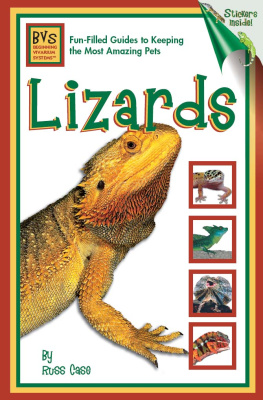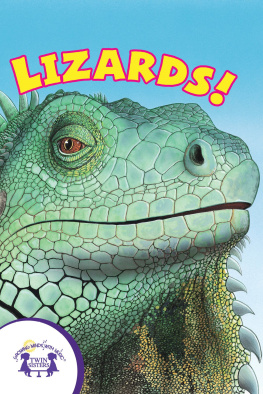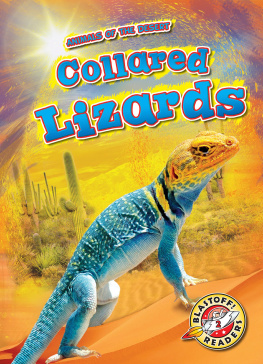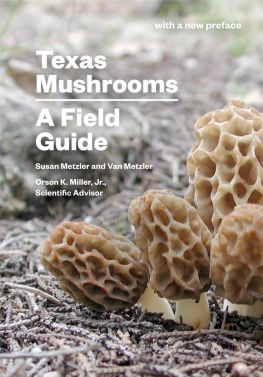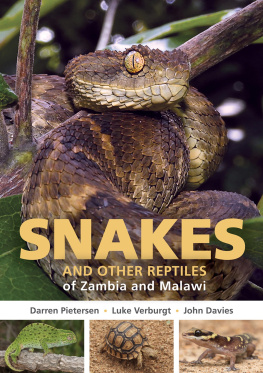
TEXAS NATURAL HISTORY GUIDES
TEXAS LIZARDS
A FIELD GUIDE

TROY D. HIBBITTS AND TOBY J. HIBBITTS
Foreword by Laurie J. Vitt

UNIVERSITY OF TEXAS PRESS
Austin
Copyright 2015 by the University of Texas Press
All rights reserved
First edition, 2015
Unless otherwise indicated, all photographs were taken by the authors.
Requests for permission to reproduce material from this work should be sent to:
Permissions
University of Texas Press
P.O. Box 7819
Austin, TX 78713-7819
http://utpress.utexas.edu/index.php/rp-form
LIBRARY OF CONGRESS CATALOGING-IN-PUBLICATION DATA
Hibbitts, Troy D., 1970
Texas lizards : a field guide / Troy D. Hibbitts and Toby J. Hibbitts. First edition.
pages cm. (Texas natural history guides)
Includes bibliographical references and index.
ISBN 978-0-292-75934-3 (pbk. : alk. paper)
1. LizardsTexasIdentification. I. Hibbitts, Toby J. II. Title.
QL653.T4H48 2015
597.9509764dc23
2014015276
doi:10.7560/759343
ISBN 978-0-292-77196-3 (library e-book)
ISBN 978-0-292-77197-0 (individual e-book)
We dedicate this book to our father, Terry Hibbitts,
who passed on his passion for the natural world, and
for reptiles and amphibians in particular, to his two sons
through countless hours spent together in the field.
We dedicate it also to the Texas Herpetological Society
for its role in promoting the advancement of herpetology
in Texas by professionals and amateurs since 1939.
CONTENTS
BY LAURIE J. VITT
FOREWORD
Texas on All Fours, Laurie J. Vitt
Lizards have been a solid and sustaining part of Texas history for nearly 200 million years, long before the emergence of humans as we know them today. During their evolutionary history, lizards have watched dinosaurs disappear, and mammals and birds diversify. Much more recently, they stood by as Native Americans populated the land, and even more recently as the French, Spaniards, and Mexicans laid claim to Texas. If lizards can wonder, they likely have wondered why two-legged, erect mammals think the land belongs to them. During this time, Texas Alligator Lizards have stalked the elevations in what became Big Bend National Park, male Greater Earless Lizards have long stood on rocks along dry waterways with their bodies revealing a rainbow of colors, and Texas Horned Lizards have squirted bad-tasting blood from their sinuses when grabbed by coyotes and other predators in the open flatlands. Some whiptail lizards have even developed the ability to produce genetically identical daughters by a process known as parthenogenesiseffectively, virgin birthwhich increases their reproductive rate considerably. Lizards were likely even more confused when humans tapped into what was left from the early evolution of life on Earth, compacted and decomposed into the vast oil fields of the Permian Basin and the coalfields scattered across some forty counties. Land that was once part of their range rapidly became a maze of highways, cities, suburbs, and ranches, although lizards do not recognize property lines. One has to wonder whether Texas lizards still anticipate the vast annual migrations of American Bison that once crossed the land.
At some point late in the history of humans and very late in the history of lizards, a small set of humans took an interest in these generally four-legged creatures. Some lizards could spend what seemed like hours perched motionless on a rock during the early morning, while others zipped around on the ground in the late morning, always looking back to see whether you were any closer. Fascination with lizards grew as it became apparent that many species of them existed, and each species lived its life a little differently from the others. Naturalists began describing the life cycles and habits of many species during the late nineteenth and early twentieth centuries. By the late twentieth century, lizards had caught the attention of biologists from every conceptual area. Behaviorists examined their use of coloration and posturing in social behavior, ecologists examined species interactions and foraging modes, evolutionary biologists constructed life tables (a method of quantifying the effect of agespecific birth and death rates on population stability), and physiologists began to recognize that these so-called cold-blooded creatures maintained relatively high and constant body temperatures by behavioral means. Evolutionary biologists using molecular techniques and morphologists seeking homologous structures determined that snakes arose within lizards and thus technically are a subgroup of what we call lizards. Lizards became model organisms for testing hypotheses in conceptual biology.
What began as a fascination with lizards rapidly evolved into the use of lizards by scientists to examine basic processes relevant to all life on earth: the day of the lizard was not over by any stretch of the imagination. Factors leading to the widespread use of lizards in research include the following: lizards are often very abundant; most are small enough to handle safely; only two species are venomous (excluding snakes), and they do not occur in Texas; many can be captured or trapped easily; and many are amenable to experimental manipulation.
For amateur naturalists, nature hounds, professional biologists, and serious research scientists, Texas offers the opportunity to observe lizard diversity like no other part of the country. An impressive diversity of whiptails (Aspidoscelis), horned lizards (Phrynosoma), scaly lizards or swifts (Sceloporus), skinks (Plestiodon and Scincella), and geckos (Coleonyx and the introduced genera Hemidactylus and Cyrtopodion), along with snakelike glass lizards (Ophisaurus) and seemingly fierce collared and leopard lizards (Crotaphytus and Gambelia), makes Texas a lizard lovers paradise. For anyone wanting to compile a life list of lizards encountered, Texas is the place to start, and this compilation of information by the Hibbitts brothers, based on firsthand experience, is an excellent guide to this remarkable diversity.
As a final note, we have to ask what the future holds for lizards, in Texas and elsewhere. Human activity may well relegate many species to the historical dustbin, which would be a sorrow to all lizard lovers. On the more positive side, history suggests that lizards will do just fine. Diversity will change through time, as it always has, and lizards will likely stand on the rubble of civilization, just as they stood in the footprints of the dinosaurs, wondering what all the commotion was about!
Laurie J. Vitt
George Lynn Cross Research Professor and Curator Emeritus
Sam Noble Museum
University of Oklahoma, Norman
ACKNOWLEDGMENTS
We express special thanks to our wivesMarla and Rachel Hibbittsand to our daughtersCheyenne, Holly, and Hattie Hibbittsas well as to our parentsTerry and Diana Hibbittsfor their support of our interest in nature, especially reptiles and amphibians, which led to this book. Thanks are also necessary for their constant support during our work on this project. They allowed us to devote substantial amounts of time at home, on the road, and in the field to writing the text and collecting the photographs for this book. Marla in particular deserves special thanks; she undertook driving duties on a family vacation to Maine in order to allow Troy to write the bulk of the introduction to this book.
Next page

